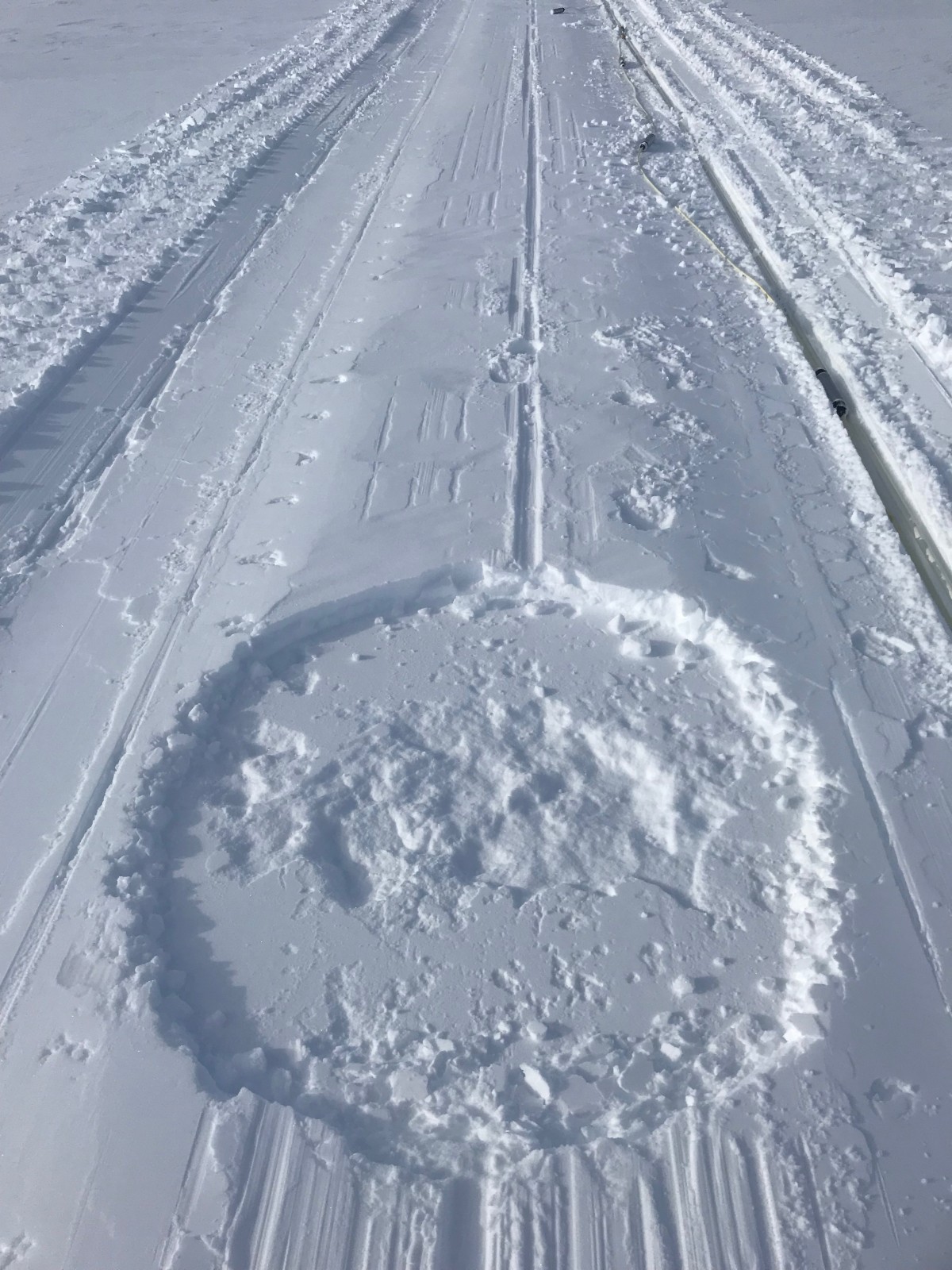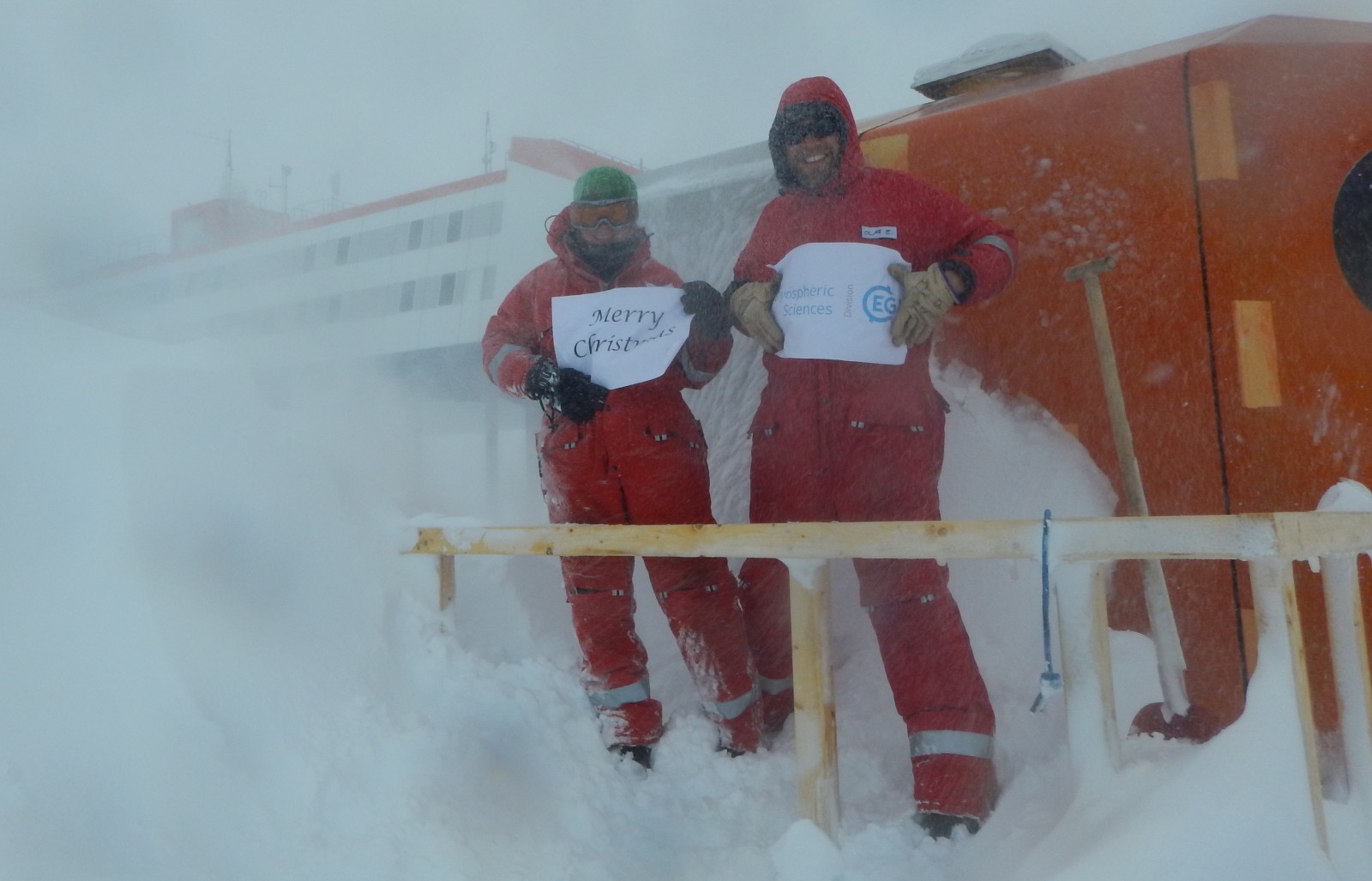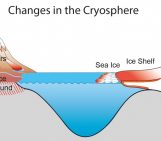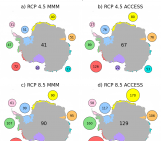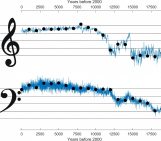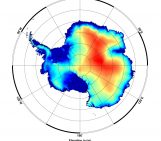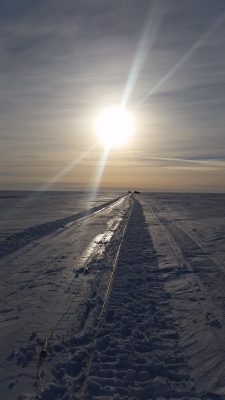
If you listen carefully to the Ekström ice shelf in Antarctica, a strange sound can be heard! The sound of a vibrating truck sending sounds waves into the ice. These sound waves are used to “look” through the ice and create a seismic profile of what lies beneath the ice surface. Read on to find out how the technique works and for a special Cryosphere Christmas message!
What are we doing with this vibrating truck on an ice shelf?
In early December a team from the Alfred Wegener Institute (AWI) made a science traverse of the Ekström ice shelf, near the German Neumayer III Station. Their aim was to make a seismic survey of the area. The seismic source (sound source) used to make this survey was a vibrating truck, known as a Vibroseis source (Fig. 2).

Fig. 2: The Vibroseis truck. It is attached to a “poly-sled” so that it can be easily towed across the ice shelf. The vibrating plate can be seen suspended below the centre of the truck. [Credit: Judith Neunhaeuserer]
It has a round metal plate, which is lowered onto the ice-shelf surface and vibrates at a range of frequencies, sending sound waves into the ice. When the snow is soft the plate often sinks a little, leaving a rather strange “footprint” in the snow (Fig. 3).
The sound waves generated travel through the ice shelf, through the water underneath and into the rock and sediment of the sea floor, they are reflected back off these different layer and these reflections are recorded back on the ice surface by a string of recording instruments – geophones (Fig 1). There are sixty geophones in a long string, a snow streamer, which can be towed behind the truck as it moves from location to location. By analyzing how long it takes the sound waves to travel from the source to the geophones an “image” of the structures beneath the ice can be made. For example, you can see a reflection from the bottom of the ice shelf and from the sea floor as well as different layers of rock and sediment beneath the sea floor. This allows the team to look into the geological and glaciological history of the area, as well as understand current glaciology and oceanographic processes!
As it happens, the team from AWI consists of your very own EGU Cryosphere Division President, Olaf Eisen and ECS Rep, Emma Smith! As this is the last post before Christmas, we wanted to wish you a merry Christmas from Antarctica!
Edited by Sophie Berger

